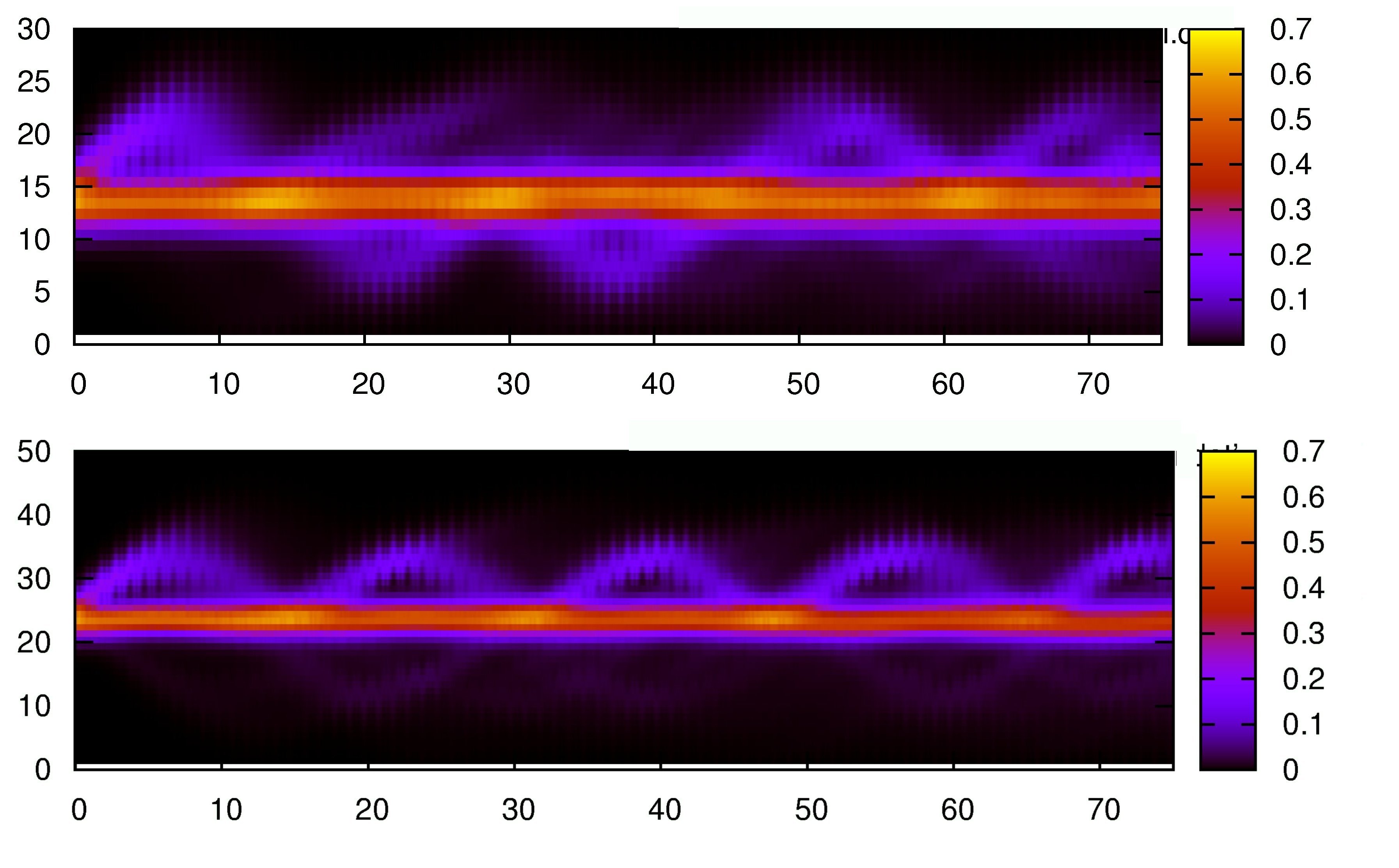Super-Bloch Oscillations with ultra cold atoms and Bound-Pairs
![]()
Super-Bloch Oscillations with ultra cold atoms and Bound-Pairs
|
Control of bound-pair transport by periodic driving K.Kudo, T Boness and T S Monteiro Phys.Rev.A 80, 063409 (2009) Theoretical Analysis of Super-Bloch Oscillations: an overlooked phase K.Kudo and T S Monteiro arXiv:1008.2096 In the field of transport of atoms in optical lattices, it has been found that tunneling between neighbouring quantum wells in the lattice can be controlled by AC-driving. In effect the tunneling amplitude takes an effective value, which can change in both sign as well as magnitude. This effect is sometimes referred to as coherent destruction of tunnelling (CDT) or Dynamic Localization (DL). Earlier experiments examined primarily diffusive spreading of the atoms. But there has been growing interest in directed motion or larger scale displacements of the whole cloud. Recent experiments in Innsbruck (Haller et al PRL 104 (2010) and in Florence (Alberti et al, Nature Physics (2009) have shown that if a tilted static field is applied, there are large-scale oscillations, with amplitudes ranging over hundreds of lattice sites. These are somewhat analogous to Bloch oscillations, an old effect predicted by solid-state physics: if a static electric field is applied to a periodic lattice,then, if the electronic motion is quantum-coherent, the electrons will not simply accelerate along the field: in fact they will oscillate back and forth in position. This effect cannot be seen in typical electronic devices: the electrons do not retain quantum coherence for long enough. But long-term quantum coherence is attainable with with ultra-cold atoms, so Bloch oscillations in atomic lattices were seen over a decade ago. The Super-Bloch Oscillations occur when AC driving is applied on top of
the static field: they have been shown to be analogous to ordinary Bloch Oscillations
...but inflated by a factor of hundreds in amplitude. The recent experiments
found that the SBO behaviour had a complicated
dependence on the AC driving field and its initial phase. We have found that
this can be accounted for by an additional phase correction in an effective dispersion
relation. It combines with the Dynamic Localization renormalisation of tunneling to
account fully for the experimental observations. It also accounts for the behaviour
of directed transport in analogous spin-chain systems Recently, we have investigated the effect in Fermionic condensates with attractive interactions, where the atoms can form Bound-Pair states. The SBOs are different for bound-pairs and free atoms. As a result a cold atom mixture of free atoms/bound-pairs will separate and the corresponding wave-packets can be made to recollide repeatedly, as shown in the figure below. |
|

![]()